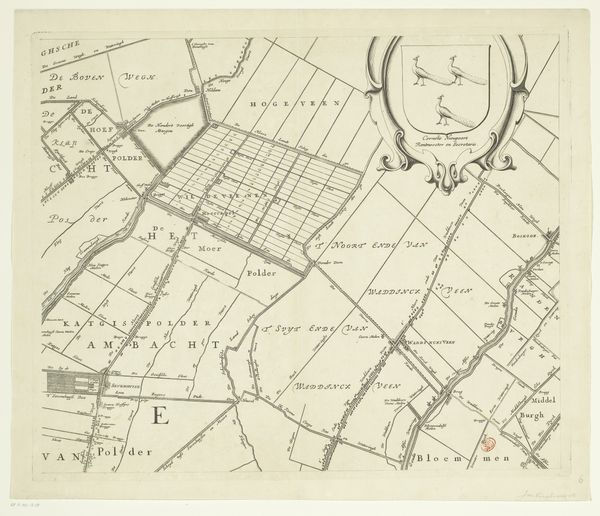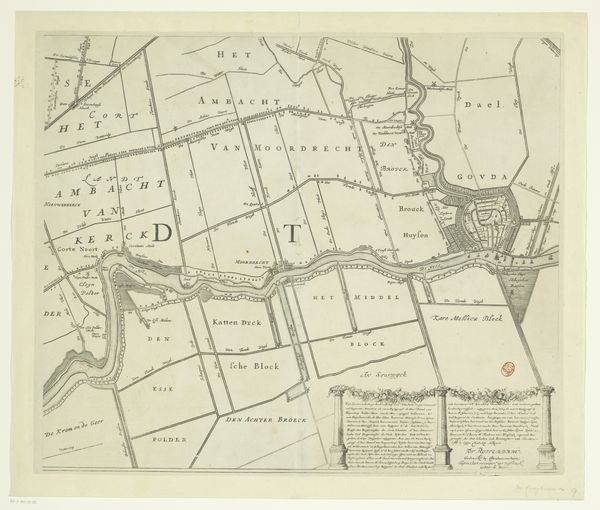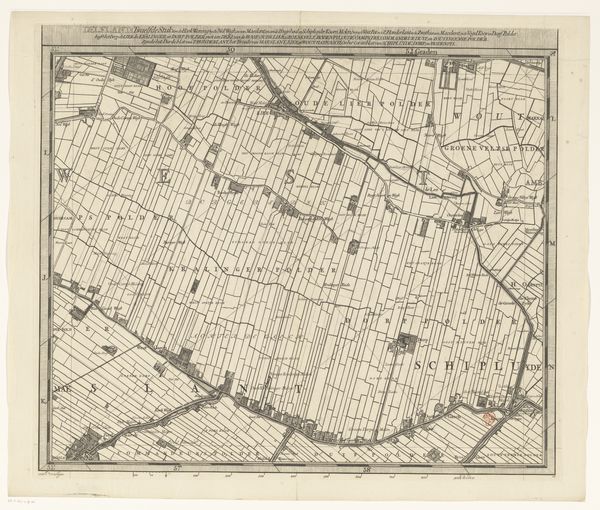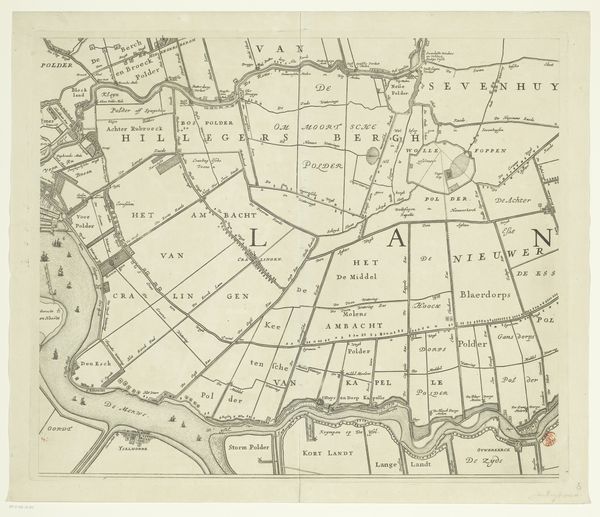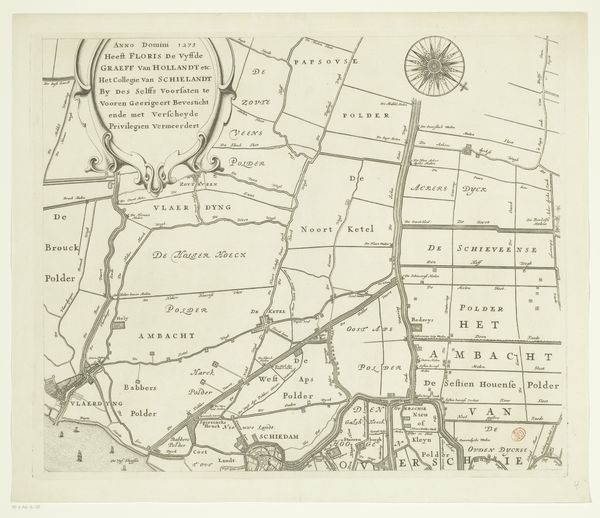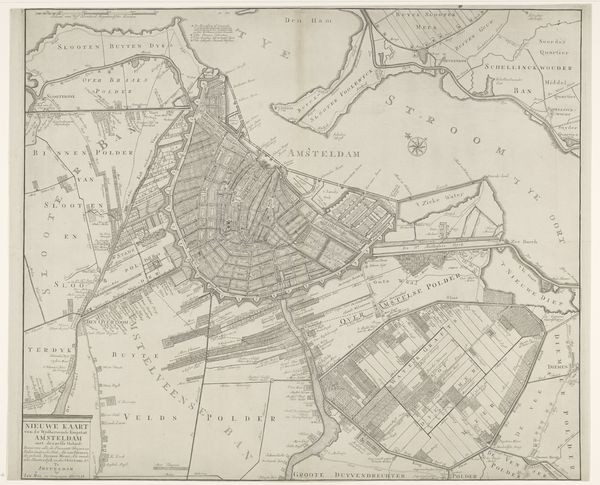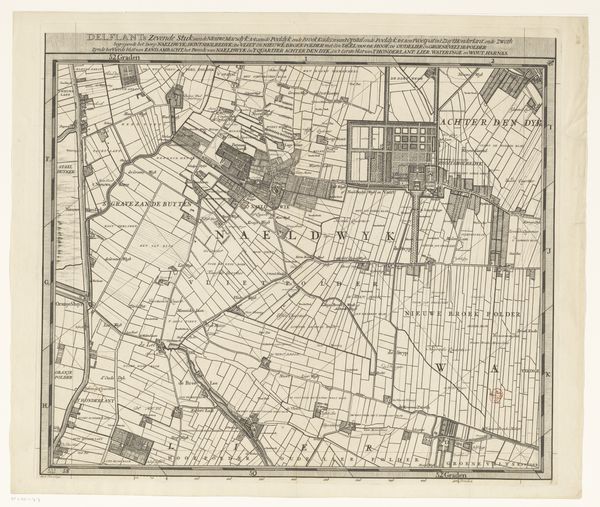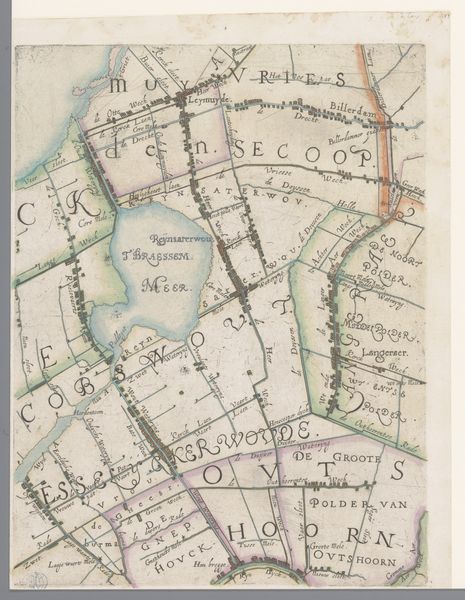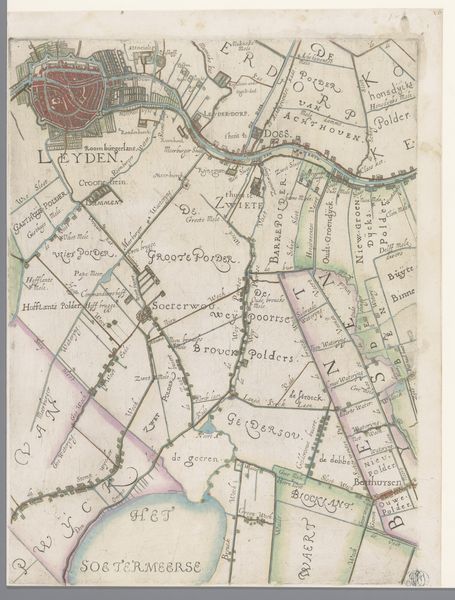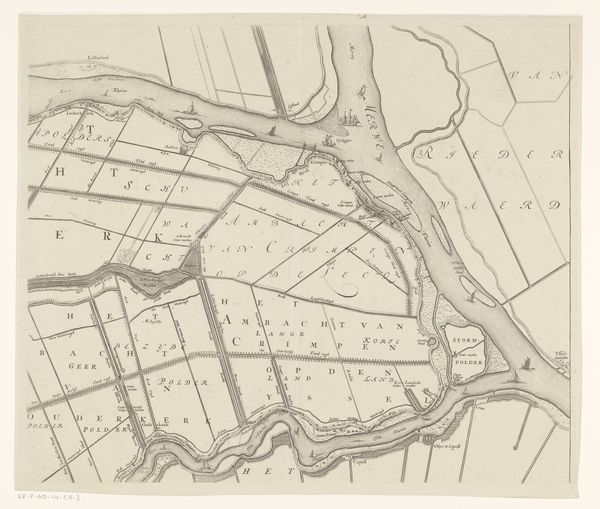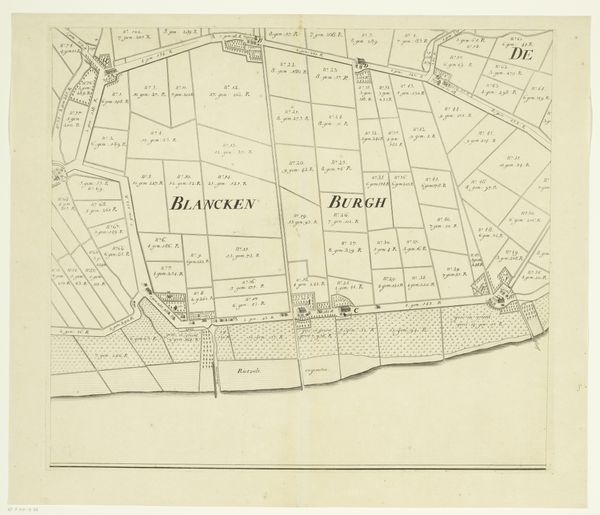
Kaart van het Hoogheemraadschap van Schieland (vijfde deel) 1684 - 1718
0:00
0:00
johannesvinckboons
Rijksmuseum
drawing, print, paper, ink, engraving
#
pen and ink
#
drawing
#
dutch-golden-age
# print
#
old engraving style
#
landscape
#
paper
#
ink
#
geometric
#
engraving
Dimensions: height 498 mm, width 595 mm
Copyright: Rijks Museum: Open Domain
Johannes Vinckboons created this section of the "Map of the Polder Board of Schieland" in the mid-17th century. It reflects a society grappling with land, water, and control, charting not just geography but also human intervention. Consider how the map portrays the relationship between the Dutch and their environment, a struggle to reclaim and manage land. The detailed delineation of polders—land reclaimed from water—speaks to the period's economic ambitions. We can read the landscape as a stage for human activity, marked by boundaries, fields, and settlements. Vinckboons' map is more than just a practical tool; it's a mirror reflecting the values of a culture that sought to master its environment, a testament to the period's social and economic aspirations. This detailed rendering of the landscape evokes a sense of both control and vulnerability. It serves as a reminder of the constant negotiation between human ambition and the forces of nature.
Comments
No comments
Be the first to comment and join the conversation on the ultimate creative platform.
